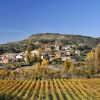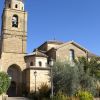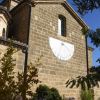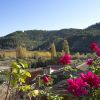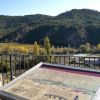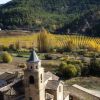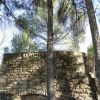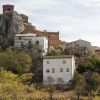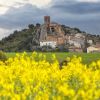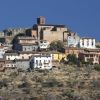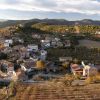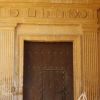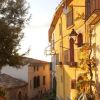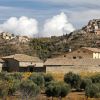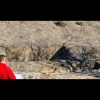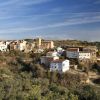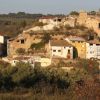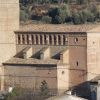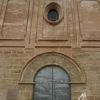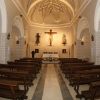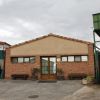PUEBLOS
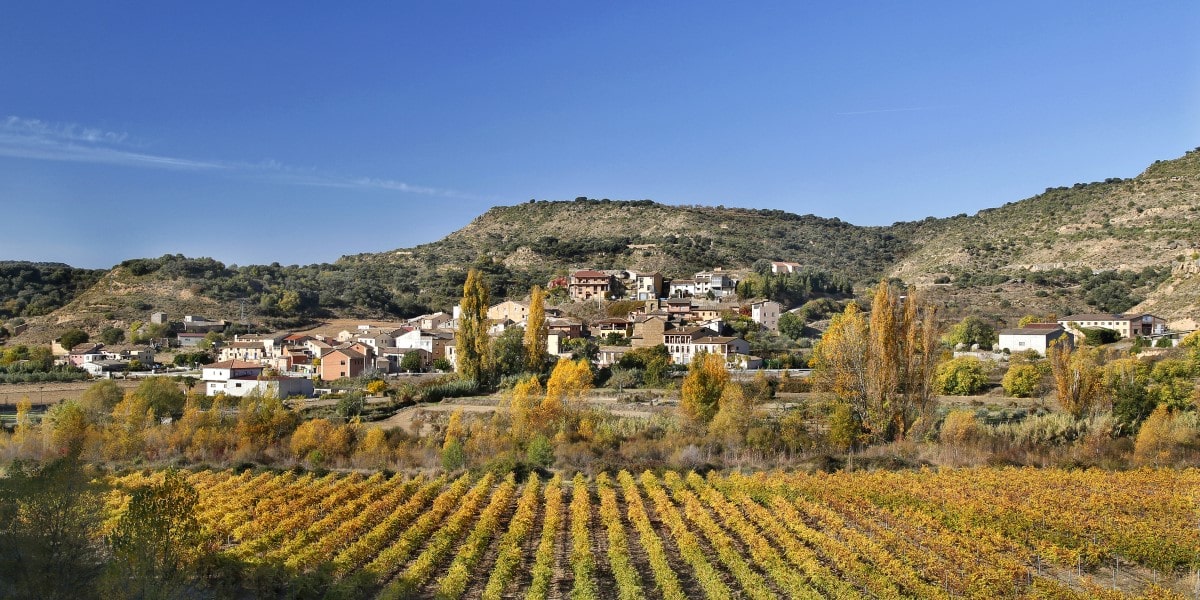
Huerta lies to the north of the Somontano region, in an area of such historical richness that it is considered by many to be an open air museum; the River Vero Natural Park. It is also within easy reach of the Sierra de Guara National Park.
Vegetable plots dotted with small houses are carefully tended by gardeners while the riverbanks hide vestiges of old mills and ancient bridges; just a few abandoned stones in some cases. The fountain highlights man’s intelligent use of water over the centuries.
Climbing up the hillside of San Pedro, the town of Huerta is a lush fertile place on the banks of the River Vero. Along the same riverside the scant remains of old mills and bridges lie sleeping.
The stone houses reflect the past lives of their inhabitants. They are simple functional buildings, perfectly adapted to the surroundings, to tradition and to the necessities of their builders. They have beautiful exteriors, some decorated with geometric signs, and others with pleasant paved patios. The solar symbols and four-petal roses sculpted on the keystones of the old doorways of the houses hide messages that have been lost in time.
Steep slopes and intimate streets dating from different eras, lead to the church. This Romanesque building was replaced in the 18th century with a completely restored model, rebuilt in the popular baroque style.
Night time bonfires accompany the fiestas of San Fabián and San Sebastián on the 20th of January. On the 15th of May, Huerta honours San Isidro with the preparation of a huge pot of beans. The pilgrimage to Santa María de Dulcis also takes place in May. The cycle of fiestas finishes with the annual festival in honour of the Virgin Mary in August. On All Souls Night Huerta maintains the tradition of scooping out pumpkins and placing candles inside – similar to Halloween jack-o-lanterns.
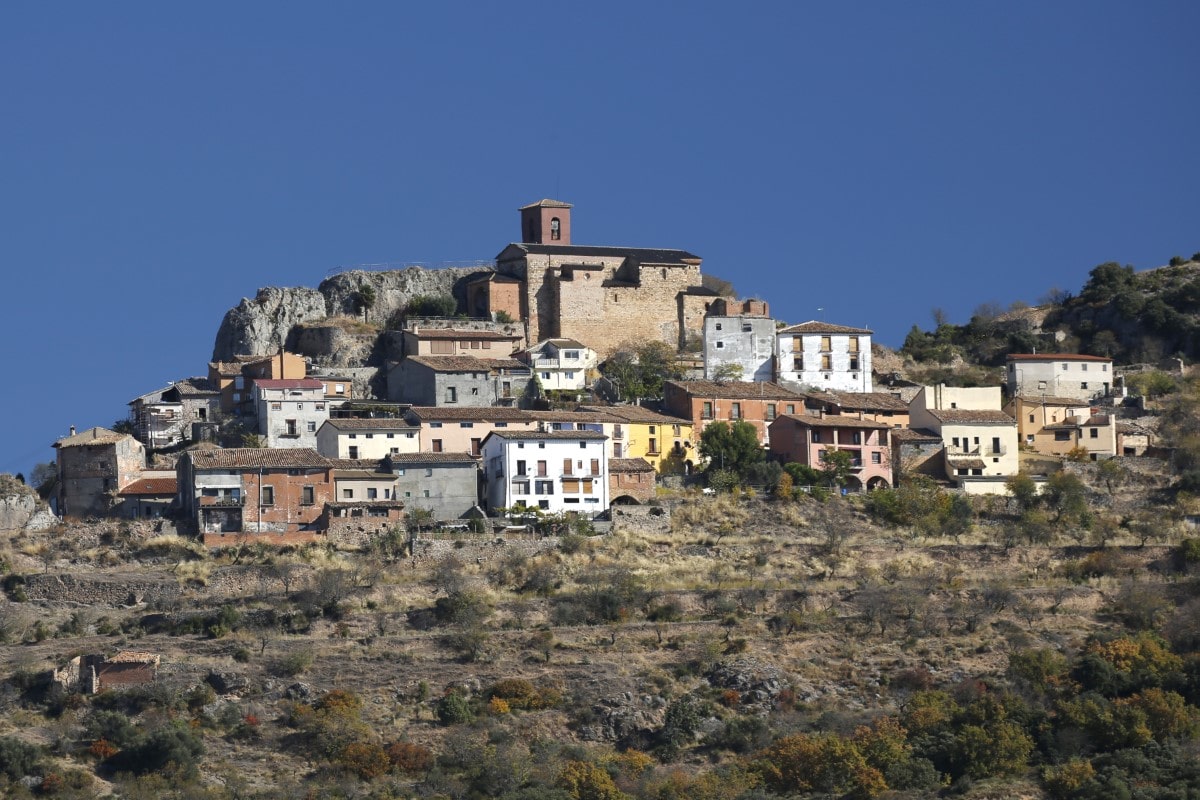
The municipal council of Hoz-Costean is made up of Montesa, Hoz de Barbastro, Salinas de Hoz, Costean and Guardia (uninhabited) all of which are located in the environs of the mountains known as the Sierra de Salinas.
The almost exclusive use of rough stone gives an urban landscape of pink tones and rough textures, in which the buildings are grouped into two well-defined areas. Many houses display beautiful ironwork, such as doorknockers in curious animal shapes.
Built in honour of Mary Magdalene, the parish church was constructed in the 17th century on the remains of a medieval castle. In its architectural design, different styles merge such as: Gothic (the ribbed vaults); Renaissance (cupola with cross); and Mudejar (gypsum decoration on the arches).
Hoz de Barbastro holds its local fiestas on the 22nd of July in honour of Santa Maria Magdalena.
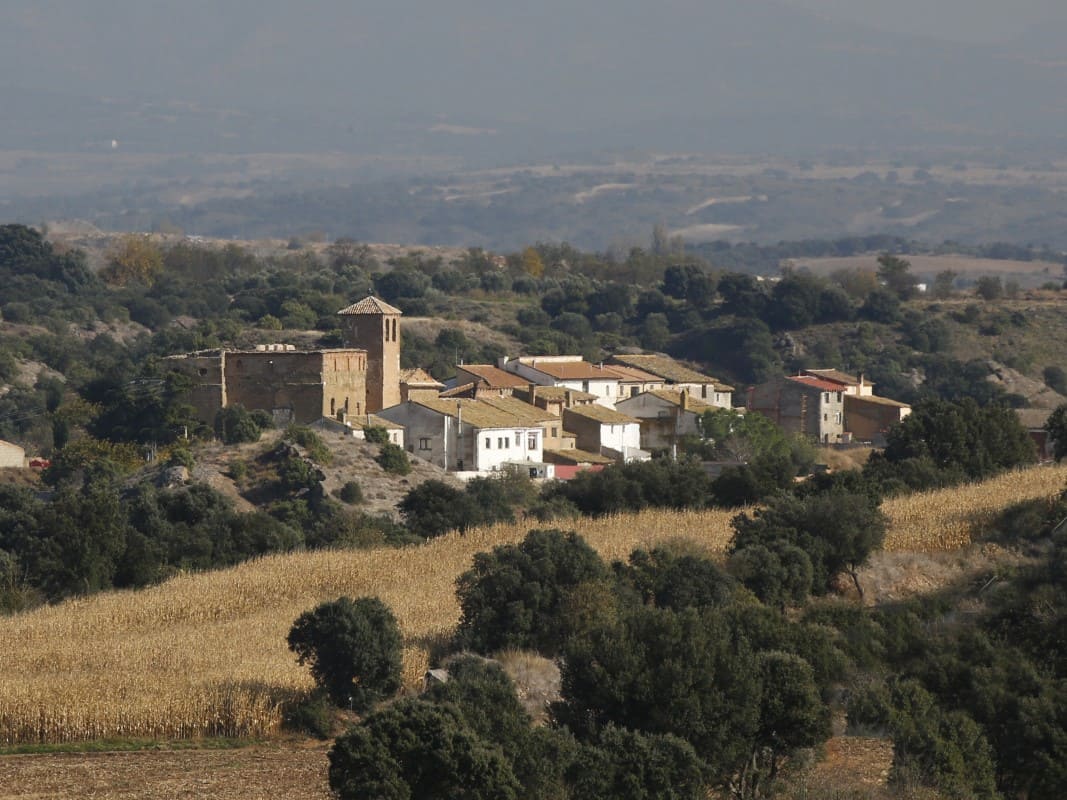
The small village of Permisán belongs to the municipal council of Ilche and is located on an agricultural plain to the south of Somontano.
Its most noticeable features are the fortified palace and the Los Angeles parish church, both of which date to the 16th century.
The palace is made up of two sections. The huge quadrangular block made of ashlars (measuring 20 x 14 metres) was used as a house. The square tower (sides each measuring 6 metres) rises at one of the corners and has a defensive air. The tower highlighted the elevation of the building and so a gallery of brick arches was added to the main section to reflect the height of the tower. The walls have large openings where artillery was once stored.
The simple church building with its single nave is attached to the palace and was built at the same time.
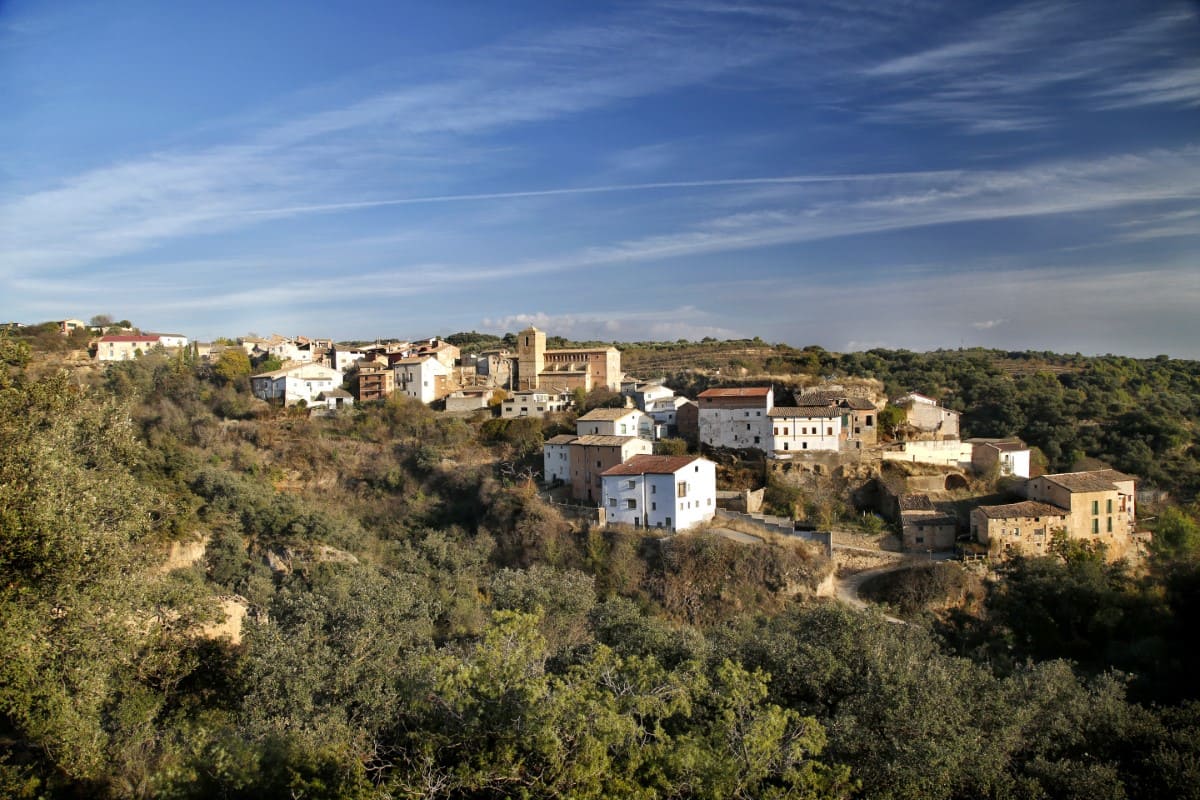
The small village of Costean consists of a beautiful group of traditional Somontano houses, built with stone and a sandy type of clay, many of which also display fine examples of ironwork.
The parish church of Santiago Apóstol (St. James the Apostol) was built in two stages. In the 16th century the main body of the church was erected with its chapels, and at the end of the 18th century the nave was extended and a wall was erected around its base. This wall was made in several sections set on a brick frame and encompasses a doorway decorated with typically eighteenth-century motifs.
Based in the village, the company Ecostean highlights the age-old Somontano tradition of producing good quality olive oil. The brothers who run the olive oil mill have built on years of family tradition in order to achieve their current standards. The combination of new plantations and century-old trees, equals the production of a range of olive oil of the highest quality, including organic oils.
Its main fiestas are held on the 11th of August in honour of San Lorenzo.













